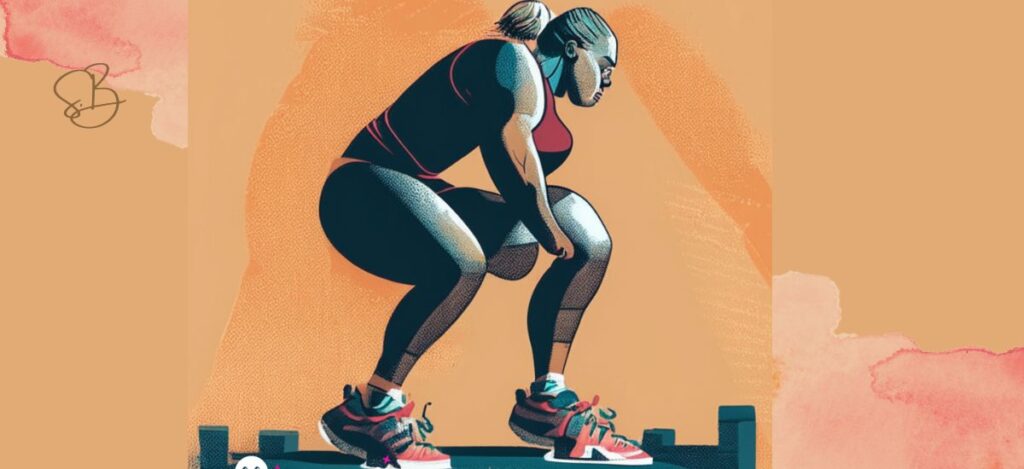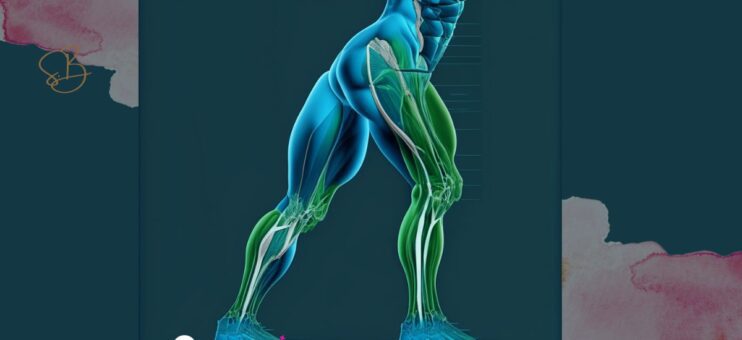When it comes to squatting, many people believe that any pair of shoes will do. However, this couldn’t be further from the truth. Proper footwear is essential when it comes to squatting, and running shoes are not the best option. In this article, we will explore the importance of proper squatting footwear, the anatomy of a squat, the impact of running shoes on your form, and the benefits of using the correct squatting shoes. We will also look at what to look for in squatting shoes, popular types of squatting shoes, and footwear for specific squatting techniques.
The Importance of Proper Footwear for Squatting
Squatting requires stable footing, proper form, and the ability to exert force through the hips and legs. Wearing the wrong shoes can increase your risk of injury and lead to poor form and posture. Proper footwear helps improve stability during squats and allows you to focus on your technique, rather than worrying about your shoes.
Why Running Shoes Are Not the Best Option for Squatting
Running shoes are designed for forward motion, with extra cushioning and a raised heel. These features are great for running, but not for squatting. The cushioning can decrease stability, and the raised heel can cause your weight to shift forward, placing more stress on your knees and quads.
Understanding the Anatomy of a Squat
Before we delve into the importance of proper squatting shoes, let’s take a closer look at the anatomy of a squat. This exercise involves the hips, knees, and ankles, as well as the quadriceps, hamstrings, glutes, and calves. Proper form during a squat involves keeping your back straight, your core engaged, and your weight evenly distributed throughout your feet.
The Muscles Involved in a Squat
Squats are full-body exercise that works various muscles. The quadriceps are the primary muscles used during a squat, but the hamstrings, glutes, and calves also play a significant role. Proper footwear can help maximize the engagement of these muscles and improve your performance.
The Importance of Proper Form
Proper form is essential when it comes to squatting. Without it, you risk injury and reduced effectiveness of the exercise. Wearing the correct footwear can help maintain proper form, allowing you to concentrate on the exercise and not worry about your shoes.
Why Running Shoes Are Not Ideal for Squatting
As mentioned earlier, running shoes are not ideal for squatting. The raised heel in running shoes places more stress on the knees and quads, while the cushioning can decrease stability. Additionally, running shoes are designed for forward motion, rather than the lateral movements required during squats.
The Design of Running Shoes
Running shoes are designed to provide cushioning and stability during forward movements while absorbing shock. They are lightweight and flexible to allow for maximum range of motion.
How Running Shoes Impact Your Form During Squats

The design of running shoes can significantly impact your form during squats. The raised heel can cause your weight to shift forward, reducing stability and causing pressure on the knees. The cushioning can also decrease stability, making it difficult to maintain proper form.
Benefits of Proper Squatting Running Shoes
Using proper squatting footwear can make a significant difference in your performance and reduce your risk of injury.
Improved Performance
Proper squatting shoes can improve your performance by providing stability and support. The flat and solid sole allows for maximum transfer of force, allowing you to lift heavier weights and improve your technique.
Reduced Risk of Injury
Wearing the wrong shoes during squats can increase your risk of injury. Proper squatting footwear can provide the necessary stability and support to reduce your risk of injuries such as knee or ankle sprains, muscle strains, or back pain.
What to Look for in Squatting Running Shoes
Several factors are essential when choosing squatting shoes, including heel height, the width of the shoe, and the material of the shoe.
Heel Height
The ideal heel height for squatting shoes is between 0.5 and 1 inch. This height allows for proper alignment and weight distribution during a squat.
The Width of the Shoe
A wider toe box allows for more room to wiggle your toes, providing better balance and stability. Make sure your shoes fit snugly but not too tight, to prevent your feet from slipping.
The Material of the Shoe
Good quality leather or synthetic materials are ideal. They should be durable and provide adequate support during squats.
Important Features of Squatting Running Shoes
Here are some other important features to consider when choosing squatting shoes:
Solid and Flat Sole
A solid and flat sole provides maximum stability during squats. It also allows for maximum force transfer, which is essential when lifting weights.
High-Quality Build and Durability
Good quality squat shoes should be built to last, with well-sewn seams and sturdy soles. This is especially important if you plan to use them frequently.
Ankle Support
Some squatting techniques require high ankle support, and some shoes are designed specifically for this purpose. Ankle support helps prevent injury and provides additional stability during squatting exercises.
Popular Types of Squatting Running Shoes

There are various types of squatting shoes to choose from, including Olympic weightlifting shoes, powerlifting shoes, and cross-training shoes. Each type of squatting shoe has its own unique features and benefits.
Olympic Weightlifting Shoes
Olympic weightlifting shoes are specifically designed for weightlifting exercises such as squats, cleans, and snatches. They have a raised heel and provide excellent ankle support.
Powerlifting Shoes
Powerlifting shoes are also designed for weightlifting but have a lower heel than Olympic weightlifting shoes. They provide excellent stability and are ideal for squatting and deadlifting exercises.
Cross-training Shoes
Cross-training shoes are designed for various exercises, including squats. They are versatile and offer good support for various exercises.
Footwear for Specific Squatting Techniques
Different squatting techniques require different types of shoes. Here are some examples:
Low-Bar Back Squat
Low-bar back squats require shoes with a lower heel and excellent ankle support. Powerlifting shoes or cross-training shoes are ideal.
High-Bar Back Squat
High-bar back squats require shoes with a higher heel and excellent ankle support. Olympic weightlifting shoes are ideal.
Front Squat
Front squats require shoes with excellent ankle support and a raised heel. Olympic weightlifting shoes are ideal.
Conclusion
In conclusion, proper footwear is essential when it comes to squatting. Wearing the correct shoes can improve your performance, reduce your risk of injury, and help you achieve your fitness goals. Look for shoes that offer adequate support, a flat and solid sole, and high-quality materials. Choose shoes that are specific to your squatting needs and techniques. Remember that proper form and posture are just as important as your footwear when it comes to squatting. Happy squatting!
What We Have Learned
- Proper footwear is essential for squatting.
- Running shoes are not ideal for squatting.
- Squatting requires stable footing, proper form, and the ability to exert force through the hips and legs.
- Proper squatting shoes improve performance and reduce the risk of injury.
- Heel height, the width of the shoe, and the material of the shoe are important factors when choosing squatting shoes.
- Good quality squatting shoes have a solid and flat sole, a high-quality build, and ankle support.
- Different squatting techniques require different types of shoes.
Final Thoughts
Proper footwear is just one aspect of squatting. Remember to always prioritize proper form, posture, and balance during your exercises for maximum effectiveness. Find the right squatting shoes for you, and always train safely and effectively.
FAQs
Can I Squat in Running Shoes?
While you can squat in running shoes, they are not ideal. Running shoes are designed for forward motion, which can affect the stability required for squats. They also have a raised heel, which can negatively impact form and technique.
Can I Use Cross-Training Shoes for Squats?
Yes, cross-training shoes are ideal for squats and other exercises. They are versatile and provide good support for various exercises.
How Much Difference Can Proper Squatting Shoes Make?
Proper squatting shoes can make a significant difference in your performance because they provide the stability and support required for squats. The flat and solid sole allows for maximum force transfer, allowing you to lift heavier weights and improve your technique. Wearing the wrong shoes can decrease stability and increase your risk of injury, so choosing the right footwear is crucial for long-term growth and success.

